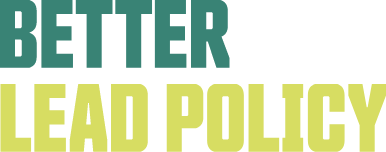The two most common options are inspection programs for all housing hazards (often including (smoke detectors, mold, carbon monoxide detectors) or inspection programs that only look for lead hazards.
To learn more about home health hazards generally, see The Green and Healthy Homes Initiative’s Home Health Hazards information. For those interested in inspecting for broad housing hazards, resources include the CDC’s Healthy Housing Inspection Manual, the National Center for Healthy Housing’s State of Health Housing Reports, and ChangeLab Solutions’ Code Enforcement Guide.
Lead-only inspections can be done with third party inspectors.
Inspecting for all housing code compliance requires government staff-conducted inspections.
For lead hazards, there are multiple options:
- Best Practice: Risk Assessment, which looks for all potential sources of lead, including paint and dust, water, and soil.
- Example: Detroit, Michigan
- X-ray fluorescence spectrometer
- Example: New York City, in public housing
- Visual assessment + analysis of environmental samples
- Example: Cleveland, Ohio
- Visual assessment + dust wipe analysis
- Example: Toledo, Ohio
- Visual assessment for deteriorating paint and bare soil + dust wipe if lead is NOT found and the home is in a high-risk area (called “dust wipe clearance”)
- Example: Rochester “With respect to units in structures containing five or fewer units and located in the high-risk area…, when the visual assessment identifies no interior deteriorated paint violation, the owner shall cause dust samples to be taken… to determine whether a dust-lead hazard exists.”
- Note: When Rochester, New York added lead to its existing rental inspection program, the city cross-trained code enforcement officers in lead identification.
NOT RECOMMENDED:
- Visual only:
-
- Example: Boulder, Colorado
- Lead Experts from the Columbia Law School Health Law Clinic and the Green & Healthy Homes Initiative agree that visual assessment are insufficient to detect lead dust hazards.
- Read an editorial from Toledo arguing that visual inspections are not enough.
| This decision is often driven by cost, length of time each inspection takes, and who can conduct the inspection. To make these decisions, it is important to cost out how much each approach costs. Typically, risk assessment can cost $500- $800 per unit and must be done by certified risk assessor (5 day training plus certification exam). Visual inspection plus dust wipes cost around $150-$200 and may be carried out by lead sampling technicians (one day training plus certification exam). In Cleveland, they presumed that dust clearance examinations would cost $250 per test. In Rochester, third-party clearance inspections initially cost $350, but increased competition after the lead ordinance was enacted dropped the cost to $150. To make informed decisions about which method to select, it is important to get an accurate estimate of cost for each alternative, then multiply that cost out per unit covered by the requirement. In some cases, the cost of a more rigorous test may be feasible. In other communities, a different method may be cost-prohibitive. |

